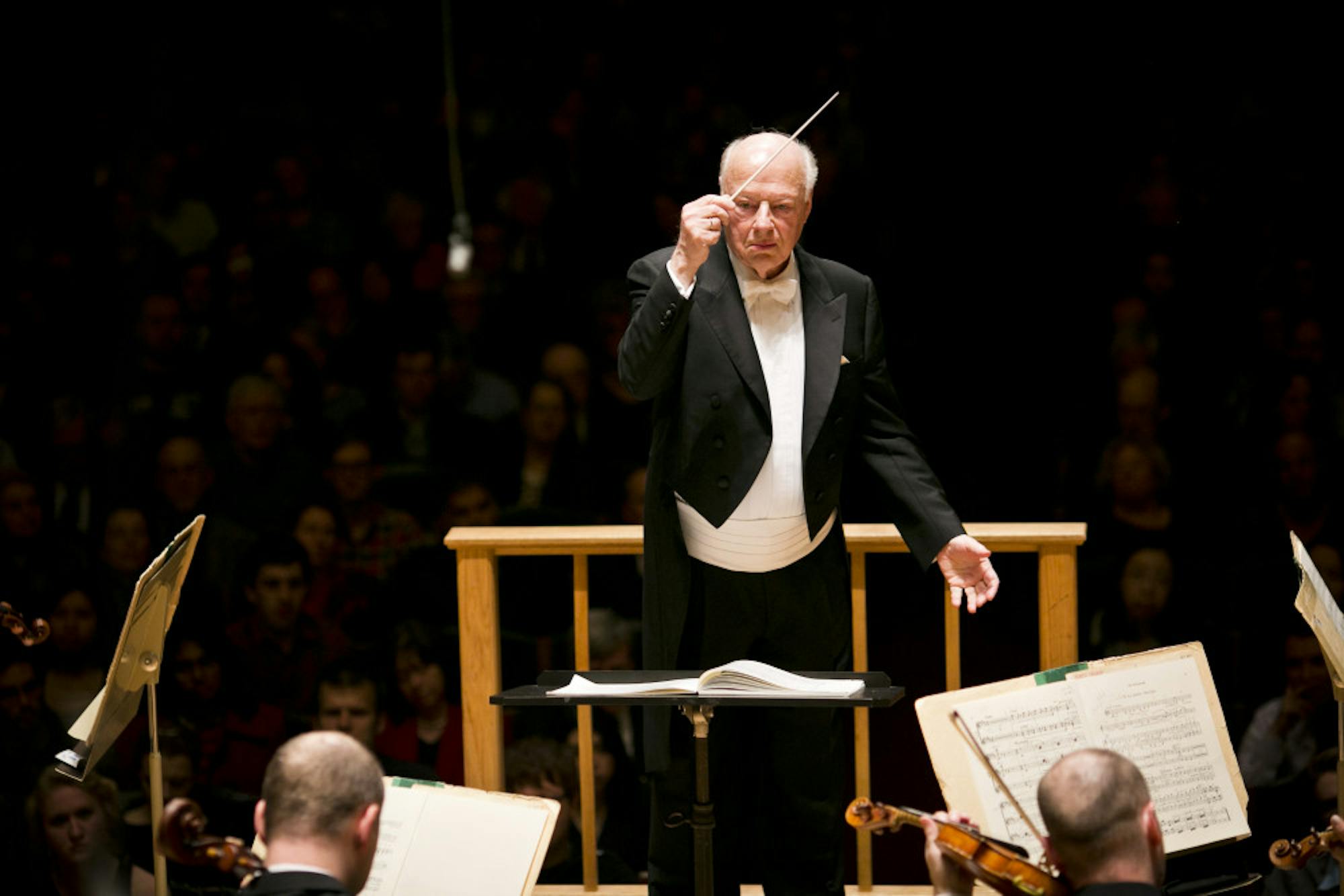Approaching the penultimate week of its 132nd season, the Boston Symphony Orchestra (BSO) performed pieces from Maurice Ravel, Thomas Adés and Wolfgang Mozart on April 23. The conductor for the evening was Bernard Haitink, a native Hollander with an internationally renowned career of 60 years. He is a well-regarded conductor and musical personality, and his passion showed in his emotional performance.
The BSO first performed Ravel’s “Mother Goose” (1911), a complete ballet score. Ravel was inspired by children and children’s fables in writing this piece -- originally it was a series of piano duets that each told their own small story. Now orchestrated, “Mother Goose” is an incredibly delightful listen. The BSO did an excellent job of playing up the theatrical events in the music, and the musicians were able to tell a story without the help of any ballet dancers.
The rich texture, varying rhythms and genius orchestration of “Mother Goose” made it altogether quite engaging. The assortment of instruments carried the listeners through various fantasy scenes: Sleeping Beauty’s slumber played with the harp, characterizations of Beauty and the Beast with a waltzy violin pattern dancing and the contrabassoon’s low grumbling and flutes sounding like the birds that twitter around Tom Thumb’s head. Perhaps most intriguing was the “Lairdonnette, Empress of the Pagodas” (1911) section, which used the harp, celesta, glockenspiel, piccolo and flute paired with the distinct sounds of pentatonic scale patterns to decorate a royal scene reminiscent of the gamelan music that fascinated during Ravel’s time -- think Claude Debussy. The uplifting finale of the piece was nothing short of triumphant, and the BSO’s overall performance transported the listeners to another world.
Next, the BSO performed yet another Ravel piece: “Piano Concerto in G” (1931). Written after Ravel had visited the United States, it was easy to recognize the blues and jazz influences that the composer had witnessed in America. The first movement started off with the literal sound of a cracking whip, as if starting a race, and the orchestra frantically began a whirlwind movement. The concerto featured impressive French guest pianist Jean-Yves Thibaudet. His head bobbed along frantically to the breakneck pace as his fingers drilled relentlessly along the keys.
The loveliest portion of this second piece was its second movement. This movement, in contrast with the first, was slow and legato. A beautiful piano solo opened the section with a bittersweet melody that is claimed to be one of Ravel’s most beautiful. Thibaudet demonstrated further skill in his incredible control of dynamics, playing deftly but softly. The orchestra joined back in, and then a heartbreakingly beautiful oboe solo followed, played with immense conviction, bringing about the peaceful end to this movement.
The last movement of Ravel’s “Piano Concerto in G” opened with a startling bang. The jazz influence broke through even more clearly than in the first movement, pressing beyond simple blues melodies and into a more bebop territory. The orchestra created a sense of "full steam ahead!" in anticipation of the end. Cyclical patterns rose in tonality and switched among instruments to build the tension until the BSO finished the piece to a standing ovation.
After the incredible performances of Ravel’s works, the BSO followed with Thomas Adés’s “Three Studies from Couperin” (2006). While each of Adés' pieces had musical merit, the instrumentation was much simpler than Ravel’s, and each piece seemed to simply follow one musical idea around in circles. After such excitement during Ravel’s works, it seemed odd that the BSO would choose to perform three pieces that were both musically and emotionally static in comparison.
To finish the evening, the BSO performed Mozart’s “Symphony No. 36 in C, K.425, ‘Linz’” (1783). The BSO did Mozart's genius works justice with its execution. The work featured a main idea that humorously intertwined a slow and a fast melody -- evidently Mozart's inner comedian was not lost on those in attendance, as audience members were audibly chuckling to themselves. The piece was an example of Mozart's wittiness, and it was far more impressive than Adés’ works, but from a musical perspective, it fell flat with the audience. In the end, it seemed that the BSO had devoted all of their performance energy to Ravel’s music.
BSO delights with otherworldly Ravel

The Boston Symphony Orchestra, with Conductor Emeritus Bernard Haitink at the helm, successfully performed Ravel, yet struggled with Mozart and Adés.
Summary
The uplifting finale of the piece was nothing short of triumphant, and the BSO’s overall performance truly took the listeners to another world.
4 Stars





